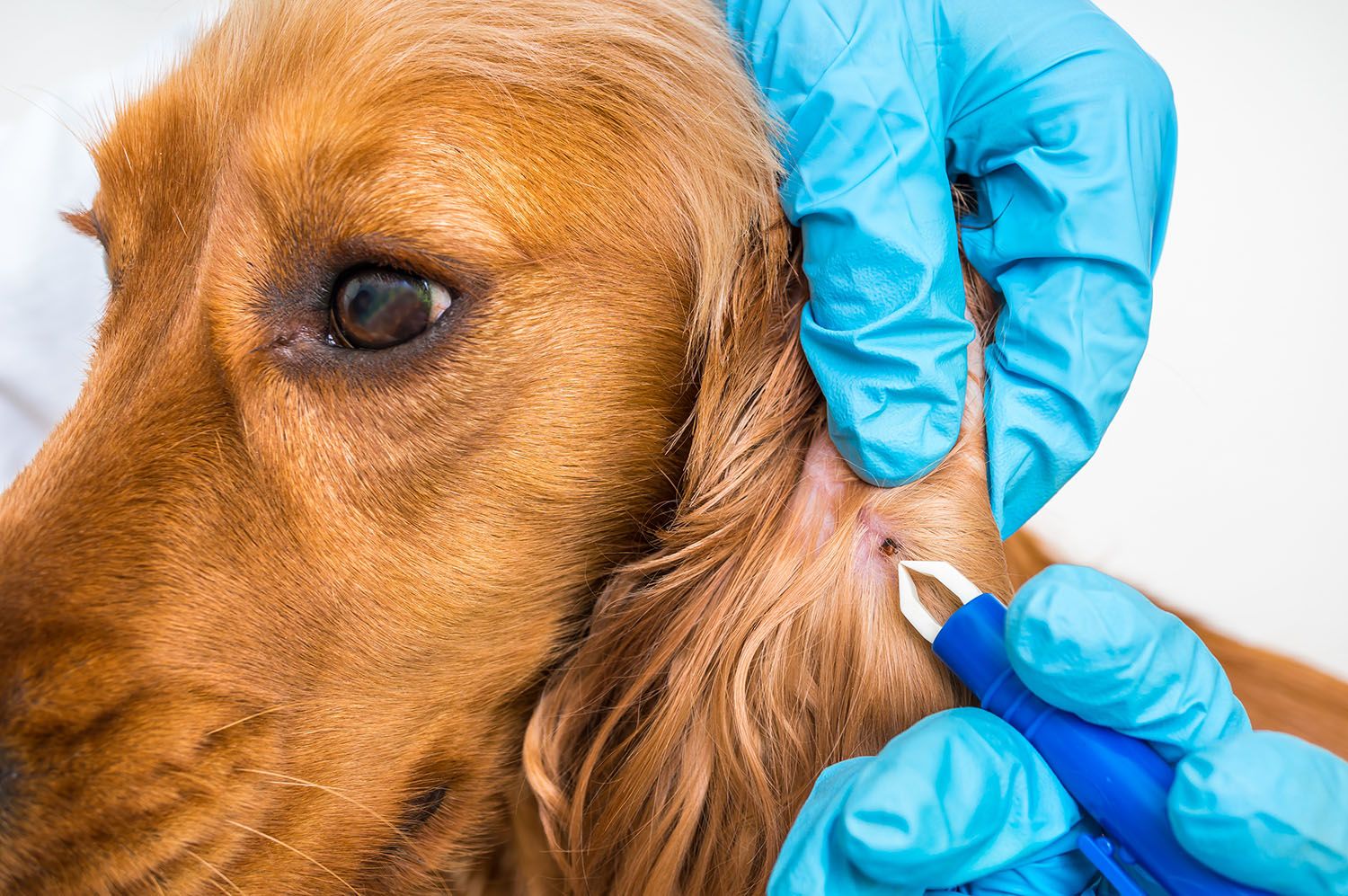Veterinarians Guide to Fleas and Ticks for Pet Owners

Everything You Need to Know About Fleas and Ticks
As any pet owner will tell you, our lovable balls of fluff are prone to bringing unwanted friends of their own home; namely fleas and ticks.
These common critters can find their way on to dogs, cats and even humans – sometimes with nasty consequences.
So, what can be done to treat these bloodsucking mites and how can you prevent them in the first place?
Fleas – what are they?
Fleas are small, wingless parasites that can feed on your pet’s blood. Cat fleas for instance are dark brown and 1-2mm long. They are often picked up outdoors, and there are over 2,000 different types in the word. Adept at jumping, they
are easy to pass on to other animals, as well as owners. They can be picked up anywhere, from other pets, kennels and even from the great outdoors. They can be more common in warmer months, but exist all year round.
Ticks – what are they?
Ticks are tiny blood-suckers with a spider-like appearance. They have eight legs and can range from 1mm to 1cm in size. They are typically fond of woodland and grassy areas, where they latch on to your pet. They are known for transmitting
bacterial diseases, the most common of which is Lyme Disease, borne from black-legged ticks. Much like fleas, they are more common in the warmer months, but present all-year round.
How can you prevent fleas and ticks?
The first measure is to protect your pets.
If you live in a house with a large unkempt yard, try and cut back the grass, which attracts these insects. Where possible, use flea spray to prevent any outbreaks, too. While indoors, pay attention to areas where ticks and fleas can
thrive; on carpets and rugs – thorough vacuuming will help keep this at bay.
Secondly, make sure your pet’s bedding area is well cleaned. Anything that could attract unwanted visitors should be cleaned or thrown away. Where possible, deep clean toys in hot water regularly, to kill any lingering bugs.
Finally, there are many treatments on the market that you can use on your pets. Not just when they are infected, but as a preventative measure. From flea combs to sprays, along with regular brushing of their coats, to reduce pests from
growing. If your pet has long hair, you may want to keep this short, particularly in the warmer weather, so it is less of a breeding ground for pests.
Flea and tick collars are worthwhile solutions to help repel fleas away using chemicals that are safe for your dogs and cats. These can be picked up in most vet clinics, drug stores and pet stores, and are inexpensive.
Signs of fleas and ticks
Scratching, writing and over grooming are common signs that your pet may be housing fleas or ticks. Sometimes these can be visible to the human eye, particularly during grooming, but not always. Therefore, if you suspect that your beloved
cat or dog is infected, you may want to take them to your veterinarian as soon as possible.
If you experience a continual itching and bites in succession, or believe that you have been bitten by a tick (sometimes the tick is still visible in the skin), see a professional caregiver immediately.
Treating fleas and ticks
The good news is that these bugs are easy to treat, in many forms, from powders to medicated shampoos. In the first instance, visit your veterinarian. It’s also vital to ensure that you do not use the same treatment on your dog, as your
cat, as in some cases these are known to be toxic to felines. Therefore, always seek professional guidance before treatment.
You will also need to consider treating your house, from upholstery to carpets, and bedding. Anti-flea and anti-tick treatments are commonly available.
Need a vet? Call one today.
Your pets deserve the best healthcare. A sick or injured pet is scary, but finding a local veterinarian shouldn't be.
